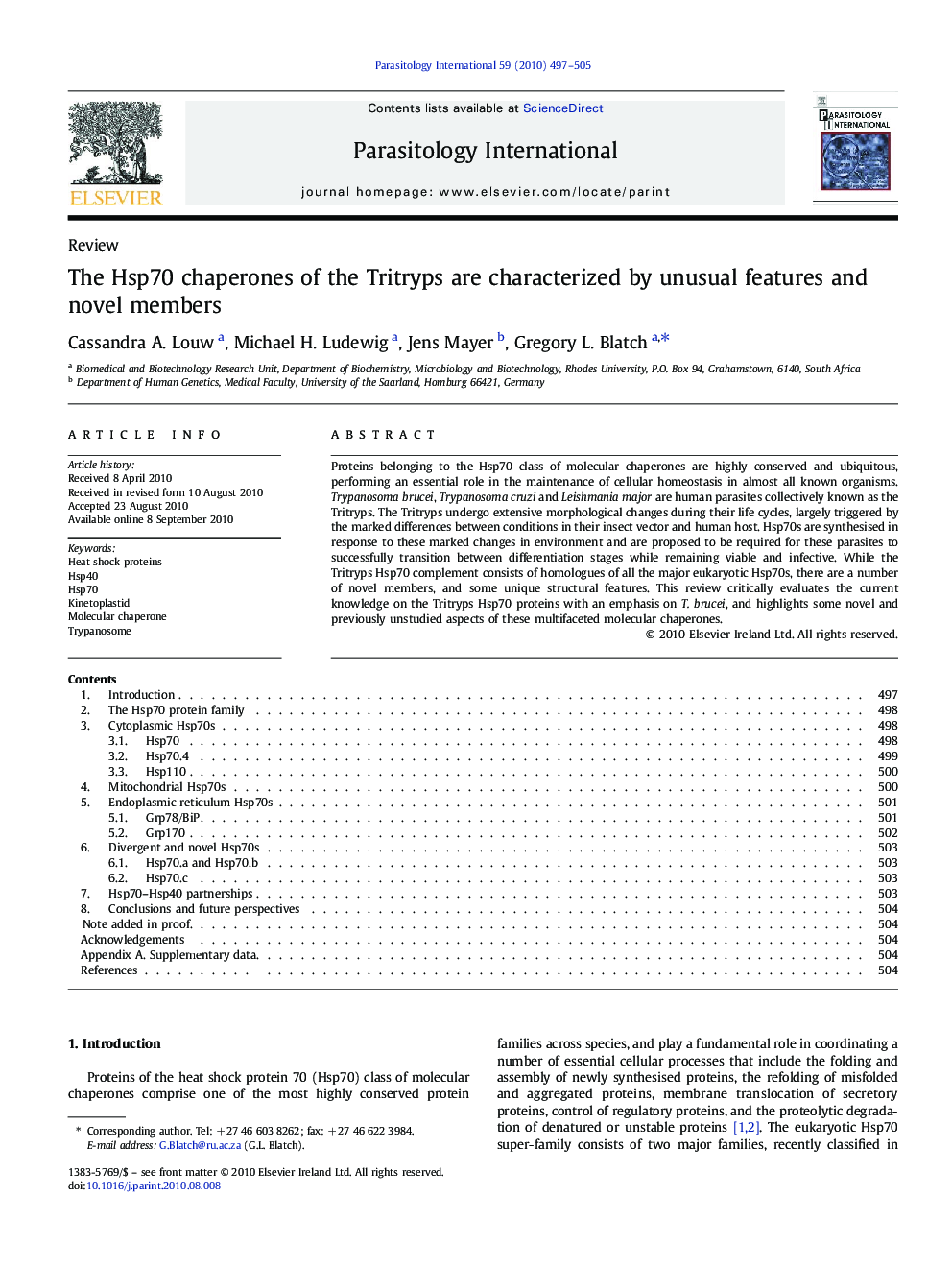| Article ID | Journal | Published Year | Pages | File Type |
|---|---|---|---|---|
| 3418079 | Parasitology International | 2010 | 9 Pages |
Proteins belonging to the Hsp70 class of molecular chaperones are highly conserved and ubiquitous, performing an essential role in the maintenance of cellular homeostasis in almost all known organisms. Trypanosoma brucei, Trypanosoma cruzi and Leishmania major are human parasites collectively known as the Tritryps. The Tritryps undergo extensive morphological changes during their life cycles, largely triggered by the marked differences between conditions in their insect vector and human host. Hsp70s are synthesised in response to these marked changes in environment and are proposed to be required for these parasites to successfully transition between differentiation stages while remaining viable and infective. While the Tritryps Hsp70 complement consists of homologues of all the major eukaryotic Hsp70s, there are a number of novel members, and some unique structural features. This review critically evaluates the current knowledge on the Tritryps Hsp70 proteins with an emphasis on T. brucei, and highlights some novel and previously unstudied aspects of these multifaceted molecular chaperones.
Graphical AbstractFigure optionsDownload full-size imageDownload as PowerPoint slide
